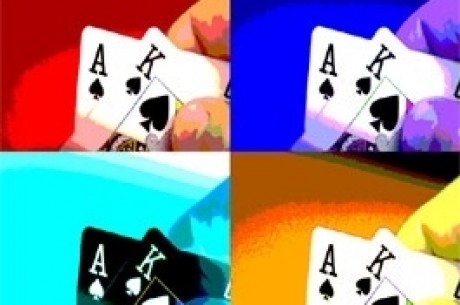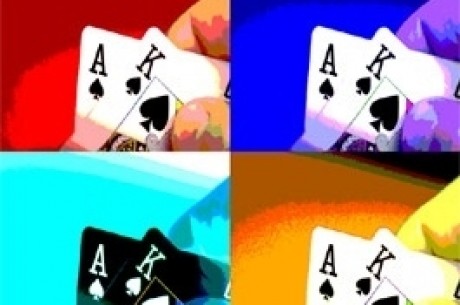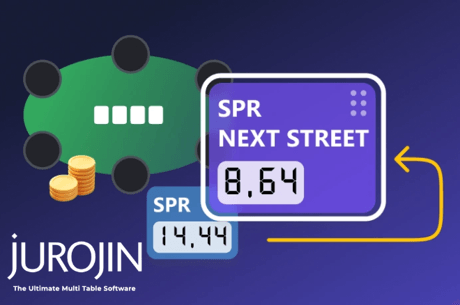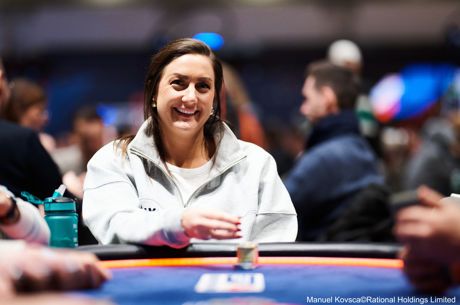Nikolai Yakovenko on the Strategy for the First-Five Cards in Open Face Chinese Poker
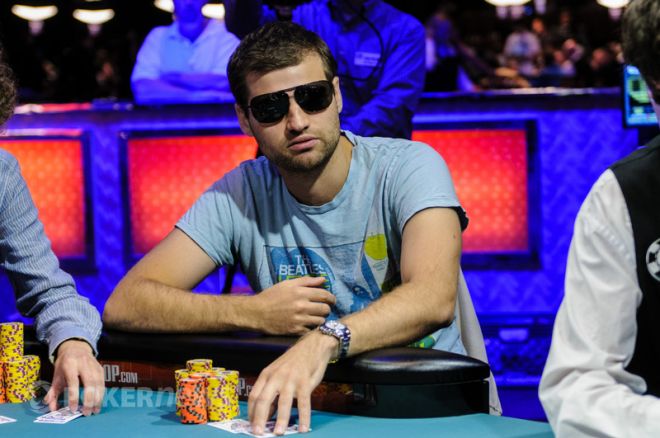
Open Face Chinese has become one of the most popular games in poker. Top pros like Jason Mercier, Barry Greenstein and Shaun Deeb have become unofficial ambassadors for the game, while dozens of other pros can be found playing the game either late into the night or on their tablets. One of those players is Nikolai Yakovenko, who helped create the ABC Open Face Chinese Poker iPhone app.
Yakovenko, also known as "Googles," is originally from Moscow, Russia and is now a poker player and software developer that resides in Brooklyn, New York. After several years at Google New York working on ranking algorithms, he's been developing independent software projects ever since while making both World Series of Poker and World Poker Tour final tables. Here Yakovenko, who has $313,598 in WSOP earnings, offers some OFC strategy concerning the first five starting cards.
At last month’s WSOP, I heard a friend, who’s a successful tournament pro and a decent open-face Chinese (OFC) player, essentially say that while most people know how to set their first five OFC cards fairly well, most make mistakes later in the hand*. He might be right, but I wonder how this could be the case. Deciding whether or not to gamble for fantasyland late in the hand, or whether to break a flush draw to make a pair, that’s a matter of odds and logic. If your opponent is likely to foul, you should back off of that risky draw and make sure to lock up the likely six-point scoop. If your opponent has a great hand, then you should gamble to make sure that you at least get a chance to win one spot and avoid the scoop. And yet people will agonize (seemingly for hours) on these decisions, while playing their first-five cards quickly, and without much thought.
*Don't believe it? Check out Nacho Barbero's thoughts in Jennifer Shahade's PokerStars Blog piece on OFC.
How you set your first five cards is the most important play of the game. If you play them well, you give yourself a chance to maximize on a good hand when good cards happen to fall your way. Something as small as setting the wrong kicker could be the difference between fouling and making it to fantasyland by the time all 13 cards are dealt to you. It might seem like good luck or an extraordinary bad beat, yet you’d never realize that your fate was sealed by the first five cards. I’ve got a reputation as an aggressive OFC player, meaning that I will often gamble for the big bonuses, and especially for fantasyland, even when I’m less than 50% to make my hands. I like to set myself up for high-upside plays, which means doing so early in the hand.
When speaking to Kristy Arnett for her Strategy with Kristy podcast, she asked, “What is the most important factor in making fantasyland?” This is simple: you have to give yourself a chance. If you don’t play a king or queen up top early in the hand, you can’t go to fantasyland later. And if you don’t set up your hand to make either a pair of aces, kings or two pair in the middle, then you can’t take advantage of that second queen or king up top should you happen to squeeze one from the deck.
Any five starting cards, no matter how odd looking, can turn into a big hand if you get favorable cards over your next eight draws. Your goal in setting the first five should be to maximize on this opportunity should the OFC gods be with you. My primary starting-five OFC principle is: “Early in the hand, especially on the first five cards, make sure that you set in a way to maximize your hand if you were to pull the perfect card next.”
Later in the hand, you can worry about playing for safety and not fouling. Early on, you want to take advantage of that perfect card (or two) that can transform your unpaired, unsuited hand into a big bonus scooper. This is why many players play live small pairs on the bottom; imagine playing that 3x3x in the middle and then catching the third trey right away.
This also means that you often want to break up pairs to draw for straight flushes. It’s ok to play a four-card gutshot on the bottom or even a three-card gutshot with a single gapper since there’s a good chance you’ll hit it, and often there isn’t a good alternative toward making a big hand otherwise.
Which leads to my second starting-five OFC principle: “Winning in OFC is all about making big bonus hands.” Decide early which bonus you want draw for and give yourself a shot to make a big hand. If the bonus isn’t happening, abort and regroup, make that bottom pair and hope your opponent fouls, etc. But early on, have big plans. Usually you’re going for a straight or flush on the bottom, or if you have trips or two pair, a full house on the bottom.
However, any sort of trash hand can become a bonus hand. Starting with Jx9x offsuit on the bottom won’t likely get you a full house, but you can hit a 10x right away and go for a straight. Or you can make two pair, especially if you play another live card on the bottom, and go for a pair of aces or two pair in the middle, which gives you a shot at fantasyland up top.
Anyway, enough theory. Let’s look at some starting hands. These are all real hands that I was dealt recently, playing on the ABC Open Face Chinese Poker iPhone app.
Easy Draw
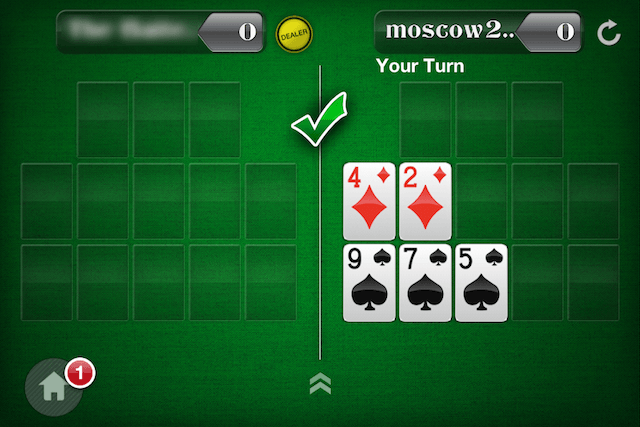
This is an easy hand to set. You have a flush draw on the bottom with straight flush possibilities, and a possible second flush draw in the middle.
In actuality, the hand is good but not great. Making two flushes is going to be hard, especially since the bottom flush draw is so far only nine-high, so any realistic chance at two flushes will involve pulling the A♠ or K♠ on the bottom. This hand has no top, and the middle is nothing special. The best card to pull next (other than an A♠, K♠, 6♠ or 8♠, is actually an off-suit four or deuce. Then you’d have a chance at a decent middle, and could play big cards up top without fear of fouling.
In any case, the hand is easy to set. No other starting-five arrangement gives you a better chance at a bonus than going for a flush on the bottom. Any time you get a three-card straight flush draw you can play it on the bottom and start hoping for the perfect runner-runner.
The Live Triple Threat
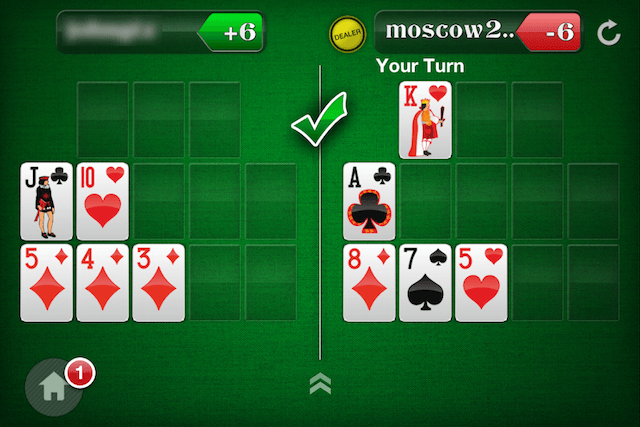
To some, this hand may not look like much, but it’s actually a fantastic starting five and another hand that’s easy to set. Getting AxKx in OFC is like getting AxKx in hold’em. It’s not as good as aces or trips, but still a damn good hand. Always play the Ax in the middle and the Kx up top. What’s great about this hand is that all of the cards you need are live. Another ace or king fast tracks you for fantasyland, while any card 4x through 9x puts you one card away from a good-enough bottom hand.
Your plan with this hand is simple: make two pair or better on the bottom (either via gutshot, or by pairing the 8x, 7x or 5x, then pair the ace in the middle and go for fantasyland up top. With an eight-point bonus for kings on top and the roughly 13-point value of fantasyland, you’ve got a smooth path to a 20-point bonus. It’s worth taking some risk to foul for that upside.
Not Much, but There’s a Plan
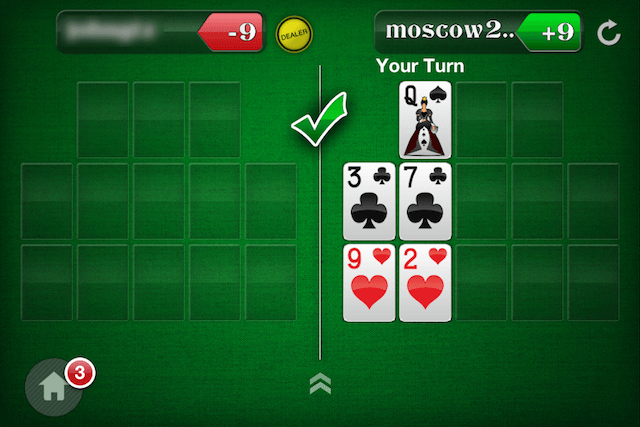
This hand is a bit deceptive, in that it looks like I’m going for two flushes. However that’s a long runner-runner-runner chance that is unlikely to materialize. What I really want to make is two pair on the bottom (or a runner-runner flush if it keeps coming), then set up two smaller pair or aces in the middle and give myself a chance for fantasyland on top. Hitting all of those cards isn’t guaranteed, but you can imagine exactly where to put any next card from a 2x to an Ax, and it’s clear how to adjust live and dead cards later in the hand.
Looking at these five cards again, the most valuable part of your hand is the queen on top. Not only do I have a path for a 20-point bonus should things break right, but queen-high on top can win me a line to avoid the scoop. And even when queen-high isn’t good on top, the queen-kicker plays should I make an ace-high or king-high on top later in the hand.
Semi-Dead, but What Can You Do?

Unlike the previous hands, here the bottom-hand draw isn’t terribly live as your Kx, Qx and 8x cards are all partially blocked. What’s the alternative?
Some would set the A♥2♥ on the bottom, and draw for an ace-high heart flush that’s pretty live. However, even with the straight draw semi-dead, you still have a better chance at the three-card straight than at the two-card flush. And if you pull another ace right away, the hand becomes simple: make two pair or better on the bottom and take a shot at a big pair up top for a big fantasyland bonus. I’d much rather pair my ace in the middle with this hand than to do so on the bottom.
Having an ace in the middle is huge. Once you pair that ace you have a good shot at a big pair up top for the rest of the hand. Nines up top is worth a four-point bonus, the same bonus as a flush on the bottom. Queens up top is worth 20 points, which is more than a bottom straight flush and much easier to get.
As the luckiest man in the world might say, “I don’t always start with an ace, king or queen in my first five cards, but when I do, I go for fantasyland.”
Greed is Good
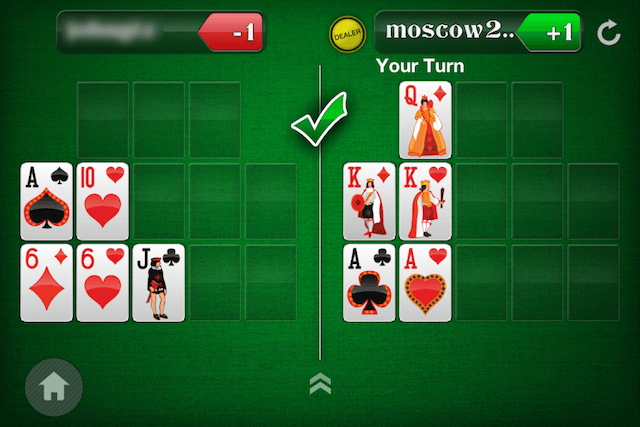
So far, we’ve been looking at some so-so starting hands, but this one is a bit better.
This is an excellent hand. Right off the bat, we’ve got three outs (the three queens) for fantasyland. We’re giving up a three-out chance for a six-point full house bonus on the bottom, but it’s worth it for a three-out chance for fantasyland!
In fact, this would be the right play even one of our queens was dead, the aces and kings full house was completely live, and if the royal flush draw was in play.
Play for a share of $9,000 in the PokerNews PKR Iron Gamer freerolls.
Final Thoughts
Any starting-five hand can become a good 13-card hand if the cards break right. Starting with the first five cards, choose a bonus hand and draw for it aggressively if the cards start to break right. If it doesn’t come right away, or an alternative comes up, back off as needed.
Usually the bonus to draw for is a straight, flush or full house on the bottom, but it can also be a big pair up top. You can try for a big pair up top with any starting hand by making two pair or two aces in the middle, and two pair or better on the bottom.
The patterns that you want to look for in your first five cards are: straight draws, flush draws, two pair and small pairs to play on the bottom. You want either an ace or a king for the middle, and either a king or queen for the top. Even the worst starting hands will have some of these elements. So pick a draw, go for it, and I’ll see you in fantasyland.
Get all the latest PokerNews updates on your social media outlets. Follow us on Twitter and find us on both Facebook and Google+!

